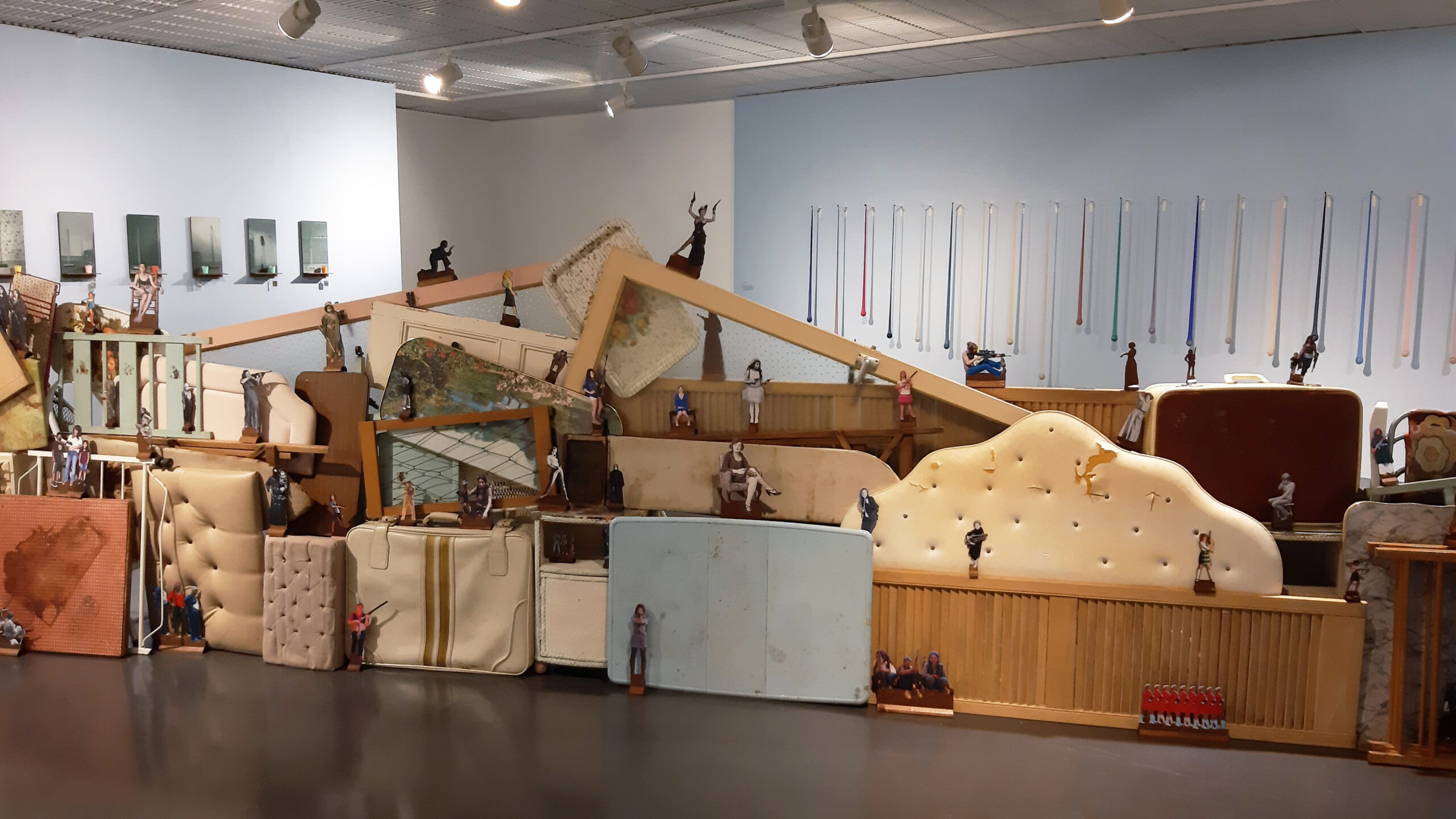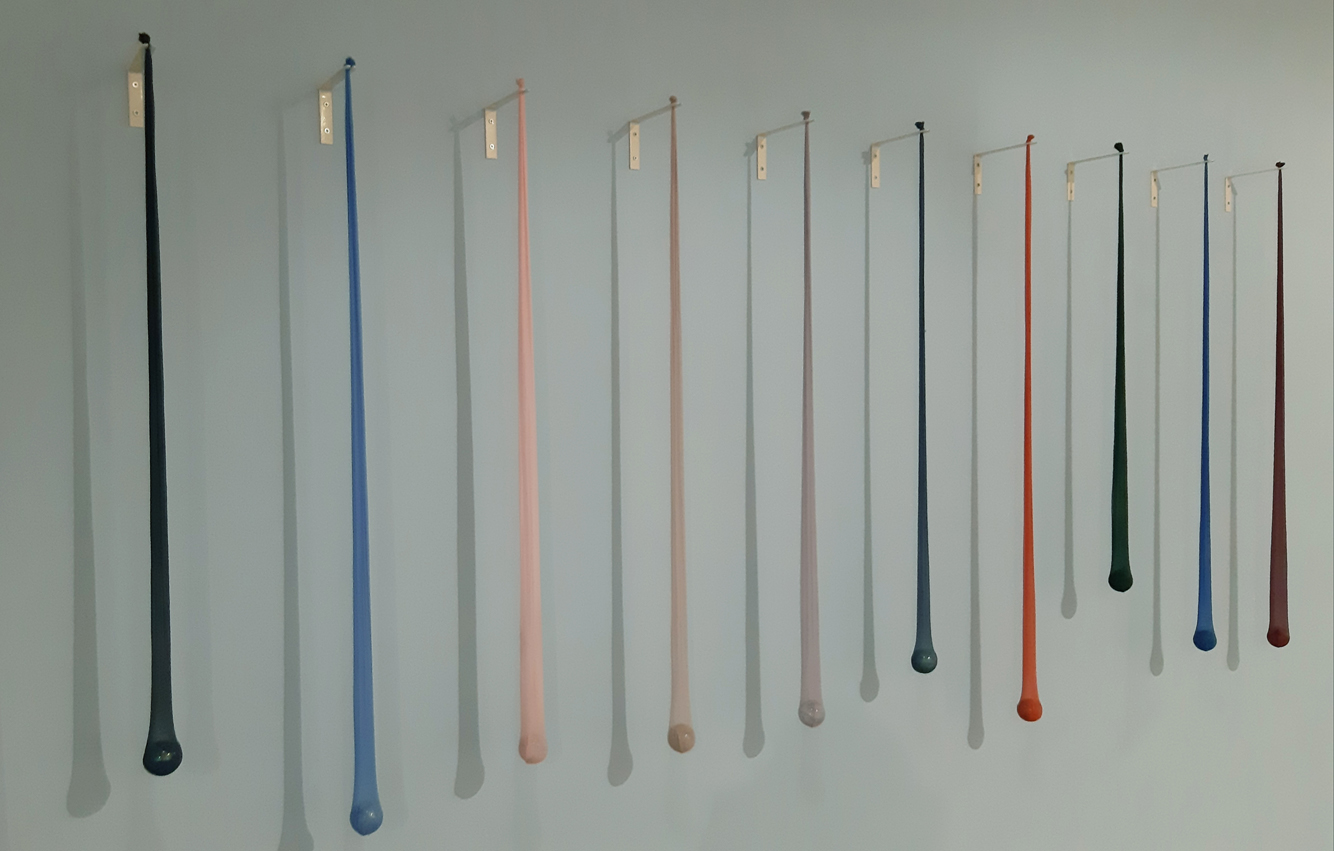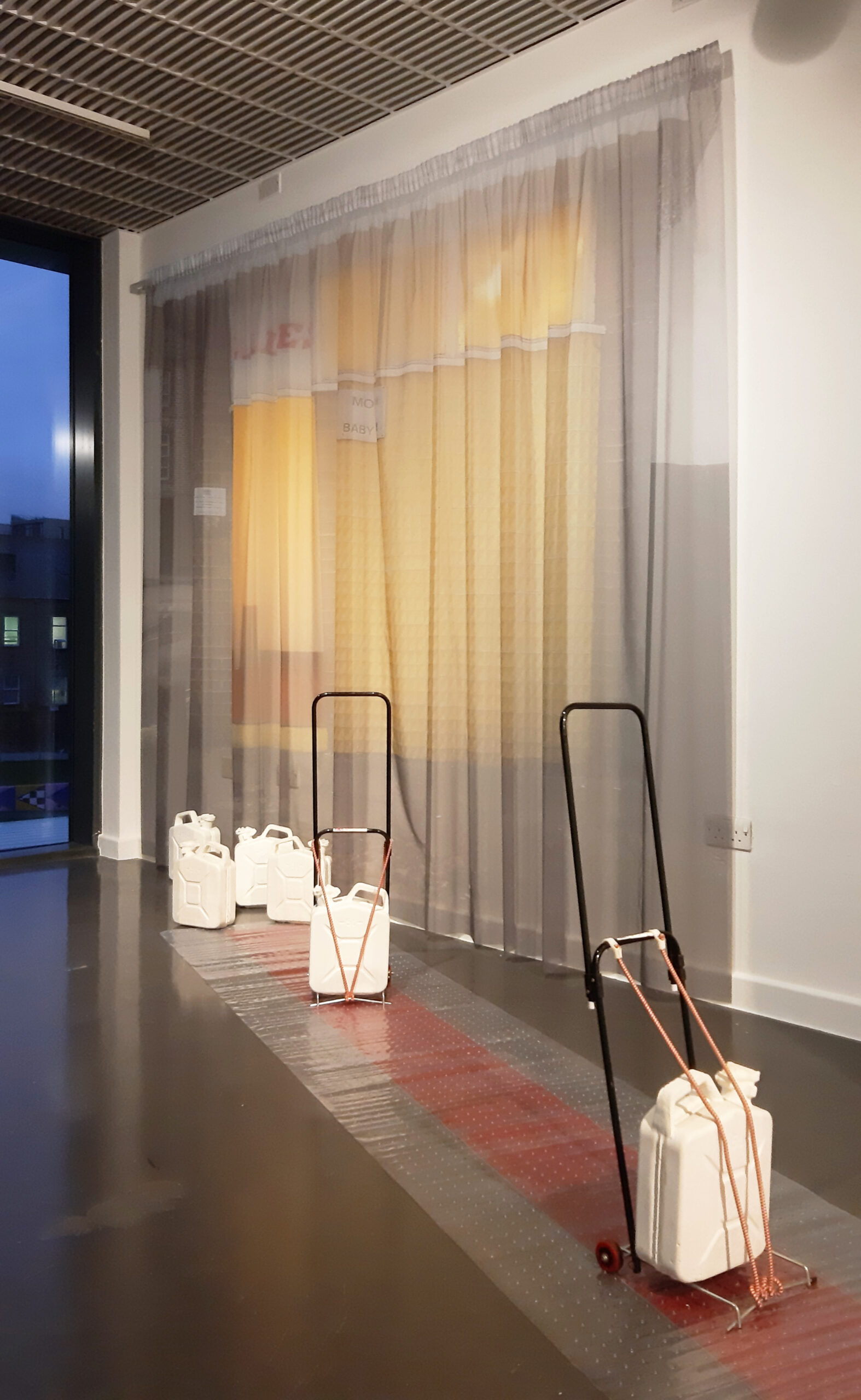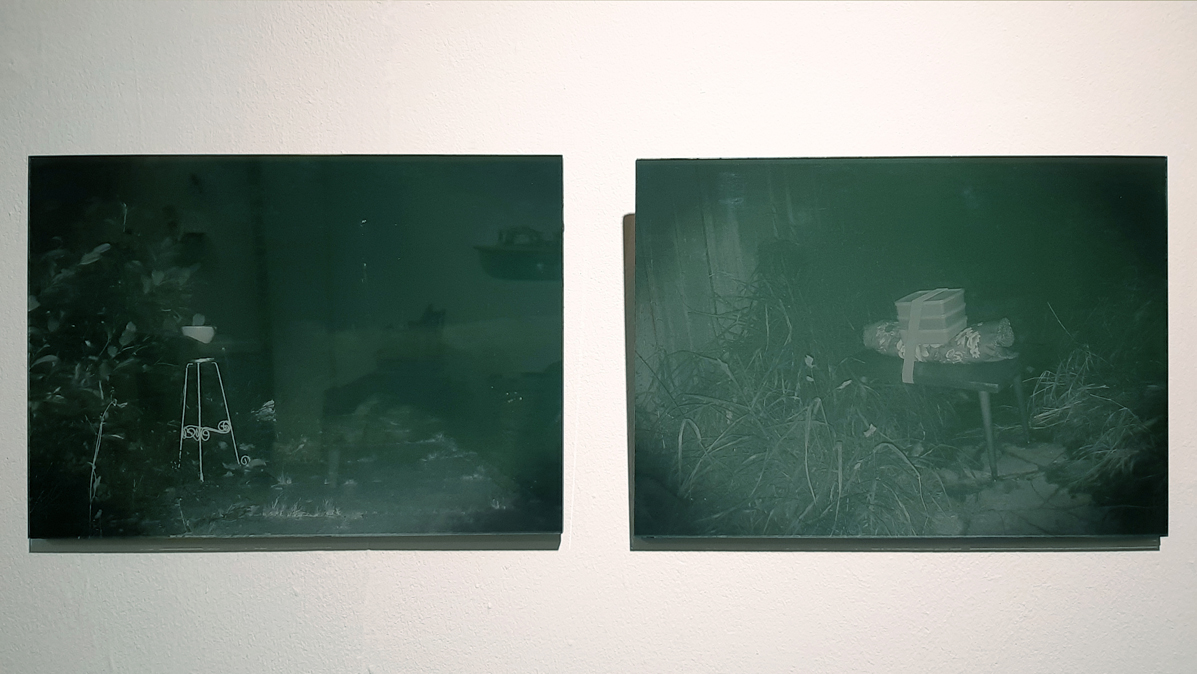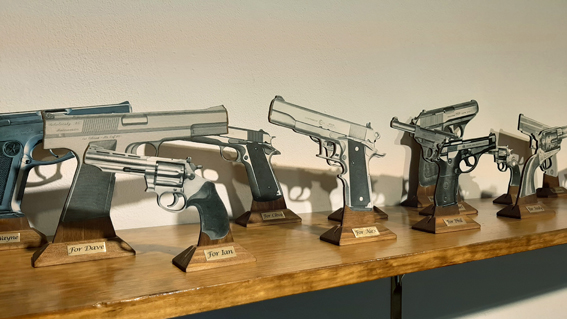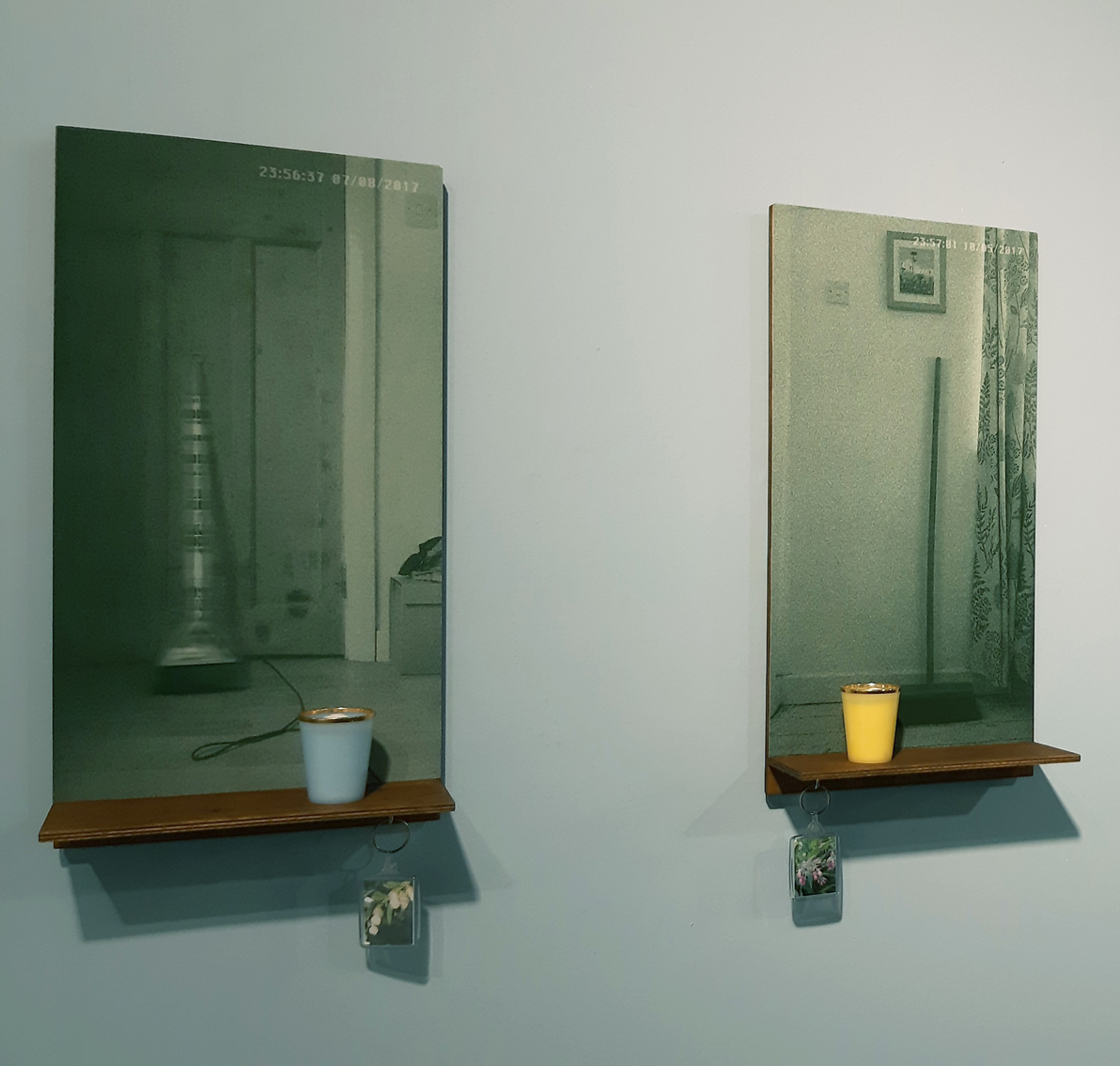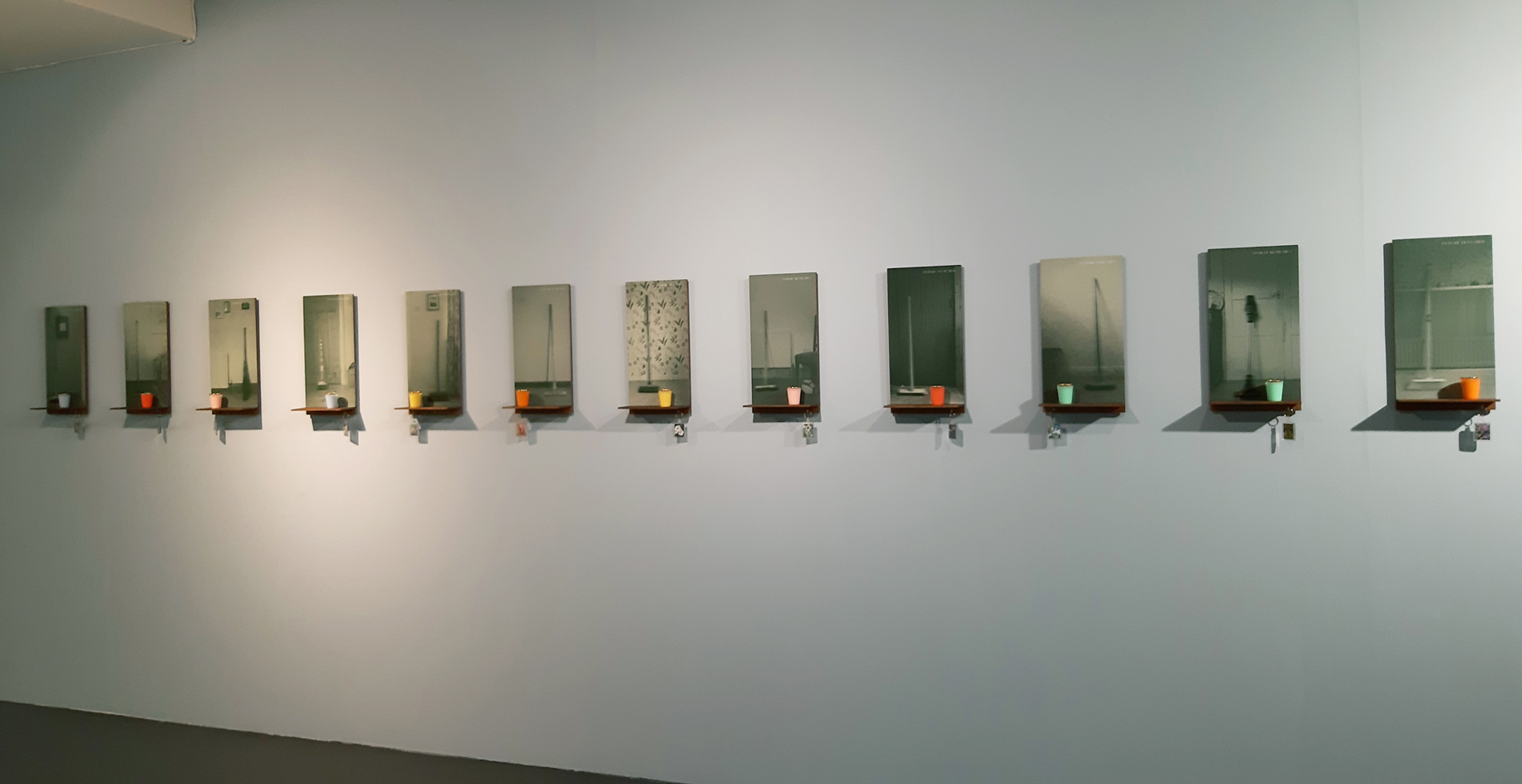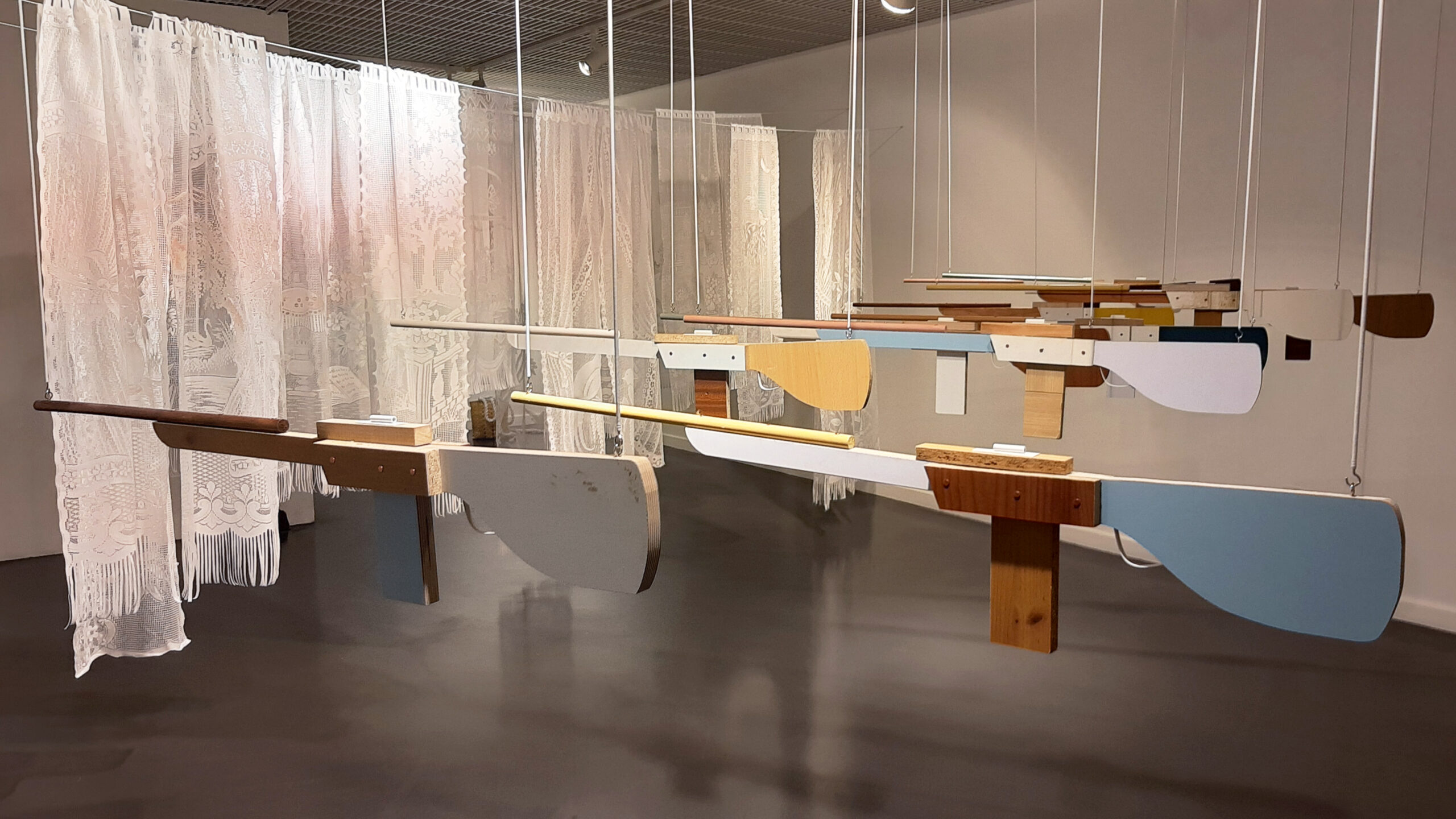Shoplifting in Woolworths
When I was a girl, I used to steal things from Woolworths, small things, things I didn’t really want or need. These small acts of defiance were dangerous and thrilling; they made me feel like an outlaw, a revolutionary, a pirate.
The sculpture and installation work in this exhibition perform narratives of domestic disobedience; in each, items of furniture come together with crafted sculptural objects constructed from the stuff of home. Yet these objects that reference ornaments or domestic furnishings are misleading, for their feminine materiality has been put to use in a manner that suggest rebellion, or, dare I say it, a feminist domestic revolution.
It is a little-known fact that the suffragettes, alongside chaining themselves to fences, also undertook a campaign of arson attacks; using improvised explosives, the women set fire to abandoned and unoccupied buildings. Fire Starters memorializes the destructive actions of these women through cast concrete jerry cans that unashamedly parade down a domestic runway.
In Witchcraft for the 21st Century, the brooms of twelve female friends photographed in their domestic spaces, have been digitally altered to suggest imminent departure, each image displays a time approaching midnight, the witching hour. Presented as objects of home furnishing, from these shelf-like sculptures hang plastic key fobs encasing images of poisonous plants and their seedpods.
Balls (for girls) references both the children’s game of stocking ball where a tennis ball at the end of a sock or stocking is swung backwards against a wall between the players arms and legs, and the ‘madball’, an improvised weapon where a snooker ball in the end of a sock swung at force can potentially kill someone. Balls (for girls) aestheticizes these actions to become a dangerous game for girls.
When my son was little, we found by the roadside a life-size rifle handmade from scrap wood. Twenty years later I have reconstructed this rifle through pieces of kitchen units I found in skips. The title of the installation, You and Whose Army references the phrase used in contempt for another’s capability to force anyone to do anything unwanted.
In Unwelcome Gift Images of handguns cut from vintage gun club magazines are mounted and displayed as if presented as awards, souvenirs or memorial objects. On each is a brass plaque displaying a man’s name, are these mocking objects lover’s gifts or subtly coded threats?
